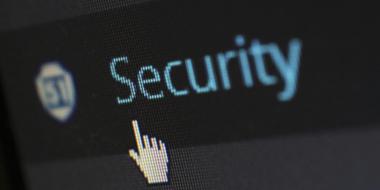How to Write a Multitasking Resume: Tips and Benefits
Multitasking is a broad term that encompasses many essential skills, including adaptability and time management. Employers are always on the lookout for these crucial abilities, so it pays to showcase them on job applications. Discover how to build a multitasking resume, review realistic examples, and impress your potential employer.

Why are multitasking skills important?
The ability to manage multiple, unique responsibilities, organize your time, and maintain efficiency is highly sought after. Strong multitasking skills benefit every role and company to varying degrees, such as a secretary who can schedule meetings and seamlessly switch to a phone call or a marketing manager who adapts their tone when meeting with different clients.
Multitasking on resumes showcases your adaptability during a crucial stage in the hiring process, and it’s just as important as your other hard and soft skills. While you can mention your adaptability and time management during the job interview, we recommend you mention it as early in the process as possible to help you stand out from other candidates.
The best way to display these skills is through real, relevant examples. Describe your ability to juggle multiple projects, tasks, and relationships, and you’ll show hiring managers how you can solve their problems.
The best multitasking skills for resumes
Multitasking isn’t just one skill, and recognizing that helps you describe your qualifications in greater detail. Think of this as another word for multitasking on resumes. Terms like “time management” and “prioritization” still imply multitasking but add more depth and value.
Here are the best multitasking skills you can add to your resume:
Prioritization
Prioritizing tasks and responsibilities helps you understand which duties are most important and complete them in a logical order. This might align with time management, if the situation involves deadlines or timed quoats, but it might also relate to energy and effort. For example, a sales professional schedules a meeting in the early afternoon so they have sufficient energy to discuss terms with a prospect.
Task-switching
The ability to fluidly move between responsibilities improves overall efficiency at work. Sometimes, getting into the “flow” of a task takes a while, and great task-switching skills reduce your downtime.
This is also a great teamwork skill, as it helps individuals move from task to task and show respect for people further down the workflow.
Time management
This skill helps you organize your time and schedule, using each work hour productively and getting the most out of your day. Great time management can refer to making efficient schedules, consistently hitting deadlines, managing distractions, and recognizing high-priority work.
For example, a remote employee with excellent time management should create and adhere to a healthy schedule, working when they’re most energetic and reducing the amount of distractions they receive from children and pets.
Adaptability and flexibility
Adaptability is a vital skill, especially in distributed, fast-paced environments. For many companies, needs shift quickly, and they must have employees who can keep up with new regulations, policies, clients, and duties.
A flexible worker is able to adapt to new skills and responsibilities quickly, maintaining top-tier performance.
Stress management
Knowing how to manage your stress and anxiety is crucial when juggling multiple responsibilities. Tactics like mindfulness, meditation, and delegation help you manage stressful days so you can continue to effectively execute tasks.
This is a crucial leadership skill, as managers experience large amounts of stress handling their direct reports and communications with senior leaders.
How to list multitasking skills on your resume
Now you know which skills are important, so let’s get into how to say multitasking on resumes.
The first, and most obvious, place to mention these abilities is the Skills section. This will only be a brief mention, but it’s a good idea to include them if it’s highly relevant to the position. For example, an executive assistant may want to list Task switching due to the various, unique responsibilities they must juggle in quick succession.
An excellent spot to mention your multitasking skills is your resume summary or objective. This quick description must be impactful to catch the hiring manager’s attention, so add an impressive metric to grab their attention. Here’s an example for an account manager:
“Adaptable relationship management skills successfully maintained five different clients with unique needs, leading to a 98% client satisfaction rate.”
Use the same tactic to add multitasking skills to your work experience and project sections. Include real examples in your work entry bullet lists, describing achievements you earned using time management, adaptability, and prioritization. Here’s a quick example:
HR Manager
Simple Solutions, Seattle, WA
- Managed recruitment campaign efficiently, prioritizing and automating tasks, which led to six new successful hires in only one month.
- Organized busy schedule to fit monthly one-on-ones with all employees, leading to enhanced career growth and a 15% boost in performance.
Check out our collection of resume samples for more realistic, actionable examples using our expert tactics.
Expert tip:
Tailoring your multitasking skills to employer expectations
Learning to say you’re a multitasker on resumes is beneficial, but it’s crucial to tailor your resume to the job you’re applying for. Multitasking skills are important to different industries for unique reasons, and you show your value when you relevantly display your qualifications.
Here are a few different industries and why they appreciate multitasking skills:
- Sales: These environments are generally fast-paced and have strict deadlines and quotes, so time management and prioritization are vital.
- Project management: Projects are complex and have dozens of moving parts, including team members and tasks, and managers need flexibility and keen task-switching.
- Software development: Developers need to adapt quickly when technology is constantly evolving and shifting.
- Customer service: These professionals must cater to many different customers while managing other tasks, including data entry and inventory.
- Freelancing: Great freelancers must manage multiple projects from different clients, maintaining unique brand styles and tones.
Freelancers need a unique approach to job applications versus traditional workers. Check out our article on building a freelancer resume for our tips and examples.
Tips and mistakes to avoid
Now, let’s finish up with a quick summary of the do’s and don’ts of building a multitasking skills resume. Bookmark this page and use it every time you’re building a resume as a quick reference.
Here are our top tips:
- Don’t be vague: Hiring managers get more out of your statements when you add more detail. Use the STAR method to put recruiters in your shoes, describing the Situation, Task, Action, and Result.
- Quantify achievements: Add numbers and metrics to each accomplishment to show employers your successful impact on a company.
- List relevant skills: Don’t list just any multitasking skills. Read the job description thoroughly and provide targeted, relevant examples.
- Use a resume template: Make sure to use a great resume template as a start. This ensures you have adequate white space and professional formatting. Even with the perfect words, a poorly structured resume won’t convey your message effectively.
- Include them in multiple sections: Is multitasking particularly important in your dream job? Don’t stop at one mention and include this vital skill in your resume summary, work entries, and projects.
- Prepare for your interview: If you include an impactful metric, many hiring managers will want to dig deeper during the interview. Prepare for this by considering your answer and how you’ll elaborate on your achievement.
“Multitasking isn’t just one skill, and recognizing that helps you describe your qualifications in greater detail.”
Prove your adaptability with a multitasking resume
Nearly every modern company relies on adaptability and organization, so use a multitasking skills resume to show you’re future-proof. Remember our top tips:
- Describe your multitasking through achievements rather than just listing it in Skills
- Use unique types of multitasking, such as prioritization and time management, to better describe your qualifications
- Add your skills to multiple sections, including your resume summary, work experience section, and projects
- Tailor each resume to the position you’re applying for, using the right multitasking terminology
Ready to get started? Jump into CVwizard’s resume maker, where you can easily showcase your flexibility and task management on a professional resume.
Make an impression with your resume
Create and download a professional resume quickly and easily



